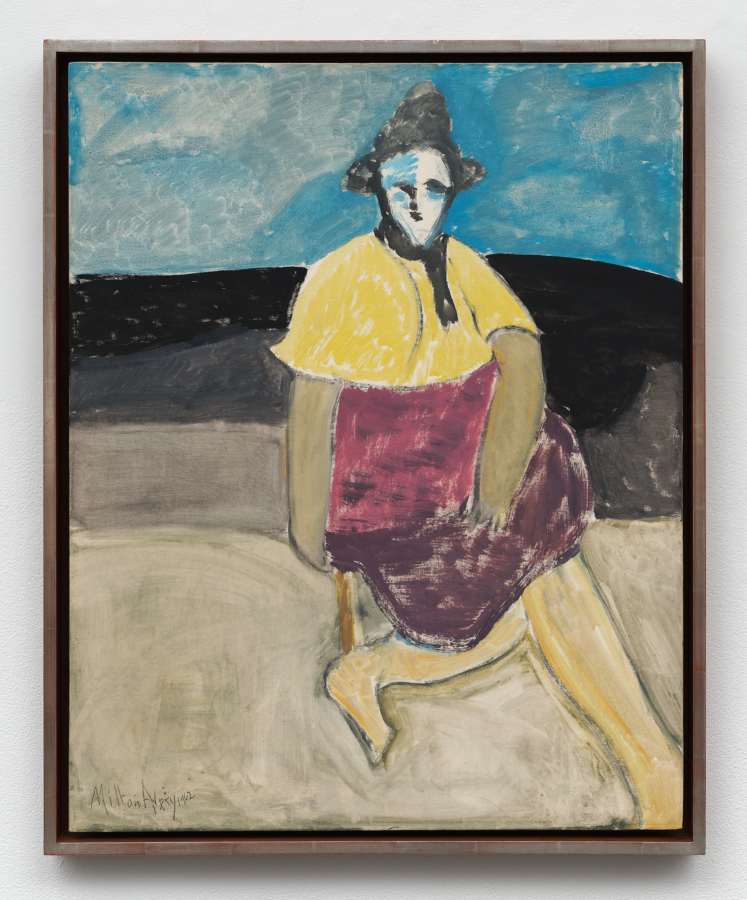Manoucher Yektai
September 30–November 13, 2021
Karma
188 & 172 East 2nd Street
New York
Manoucher Yektai
September 30–November 13, 2021
Karma
188 & 172 East 2nd Street
New York
…
Who knows better than me the generosity of the morning
As reflected in the eye of a fully blossomed flower
…
Let me get up
Let me do some work
Let me bring light
—Manoucher Yektai, “A Worn Out Memory,” Adirondacks, October 4, 2002.
Translated from Farsi by Iraj Anvar and Darius Yektai
Karma is pleased to present an exhibition of paintings by Manoucher Yektai (b. 1921, Tehran, Iran; d. 2019, New York, NY). The exhibition will take place at Karma’s 188 and 172 East 2nd street locations, and will be Karma’s first show with Yektai.
With decadent colors, loose brushstrokes, and heavy-handed impasto, Yektai’s paintings fuse Eastern and Western traditions, synthesizing a unique blend of abstraction and figuration that owed as much to Franz Kline as it did to Cezanne and the poetry of Rumi. Influenced by his early life in Iran, his visits to Paris, and the New York School, Yektai is recognized as one of the few Abstract Expressionists who continued working in the traditional still life genre. An accomplished poet, he approached the act of painting with the melodic sensibility of his own free verse poems. The work on display at Karma charts Yektai’s output over the course of the late 1950s to the early 2000s, spotlighting his novel consideration of form, color, and space.
At 188 East 2nd street, the exhibition showcases the evolution of Yektai’s still lifes from the late 1970s to the end of the 1990s. In the 1970s, Yektai’s careful arrangements of still lifes comprising of fruit, flowers, and plants explore the perennial subject of the line using a palette knife; his marks are truncated, intentional, and choreographed in tight, rigid compositions—a departure from the loose brushstrokes he used in the 1960s. The paintings are a radical fusion of expressionism and the representational—short dashes of color evoke the movement of bunched fabric and buoyant flower petals; heavily layered swaths of paint carve out fruits and cutlery set on the grid of the tablecloth.
A few years later, Yektai’s still lifes begin to explore a dialogue between the interior and exterior. Strong horizontal structures represent the borders of windows, introducing a motif that would persist in his work throughout the 1980s and 90s. Yektai painted his canvases on the floor, a mode he shared with artists such as Pollock and Frankenthaler, allowing himself a balance of freedom and control. His paintings break up volume into a multitude of planar surfaces, combining the aerial perspective with the traditional frontal view of still lifes. Reminiscent of Cubism, this gesture erodes the distinction between figure and ground while presenting a sculptural third dimension.
The paintings in the back room of the gallery from the early 1960s allow for closer examination of his fluid brushwork. Meandering brushstrokes occasionally give way to discernable subjects, exploring the legibility of form. Yektai’s canvases capture the emergence of his visual language, one which, as Media Farzin notes, “never lost sight of the subject as both anchor and catapult of abstraction.” Clumps of yellow dabs evoke piles of lemons. Blue and white dashes chisel out the highlights and shadows in drapery. According to Slifkin, these works were “a decidedly transitive operation: the painter abstracts something, taking a subject, whether it is a human figure, an object, or even an emotional state or affective memory, and through an array of distilling and distorting processes renders it indeterminate, enigmatic, and in a constant state of becoming.”
Intimately sized canvases in 172 East 2nd Street center around smaller moments: a petite floral arrangement; a solitary bloom; a cluster of ripening tomatoes. Their small scale holds a narrower focus, highlighting the juxtaposition of thick plasters of paint against thinned satin strokes of color. Ranging from the mid 1950s to the early 2000s, these works are sites of smaller experimentation, illuminating how the smallest gesture can contain an abundance of visual information. They highlight the poetry of Yektai’s gesture, and how abstraction exists at the crossroads of his two practices—both in the transmutation of feelings into the written word, and in the conversion of life into paint.
The exhibition will be accompanied by a fully-illustrated monograph featuring essays by Robert Slifkin, Fereshteh Daftari, Media Farzin, and Biddle Duke, as well as a conversation between Hadi Fallahpisheh and Tahereh Fallahzadeh.



